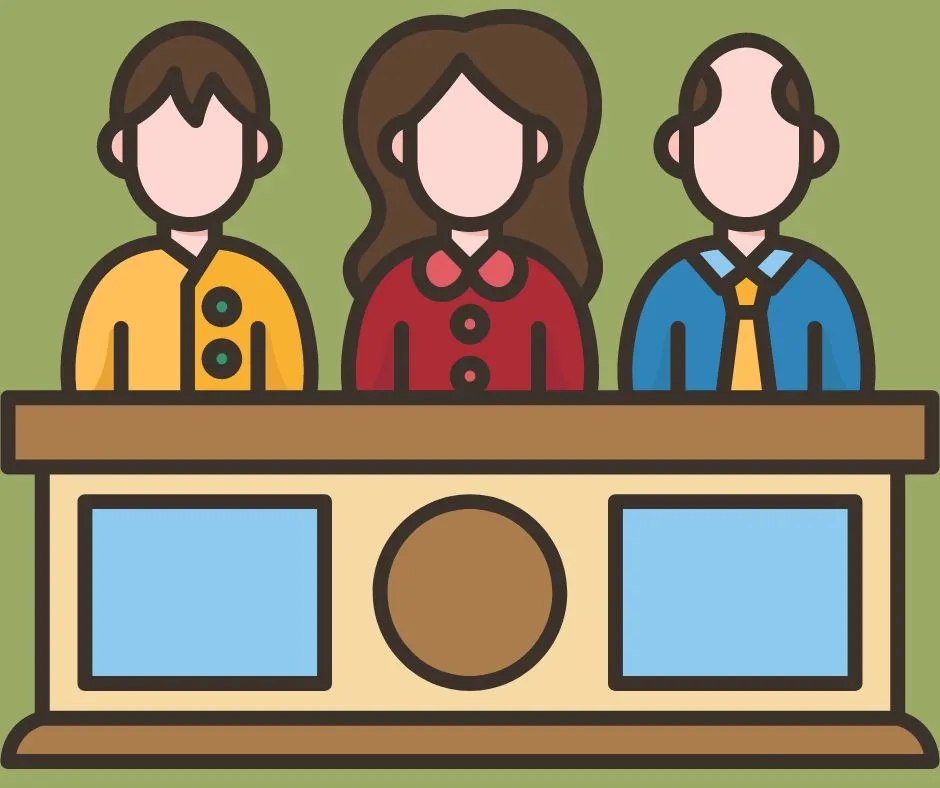
Imagine you’re on a jury, faced with a complex case. Maybe it’s a car accident with conflicting witness testimonies or a medical malpractice suit with technical jargon flying around. Suddenly, the lawyer whips out a video – not just any video, but a smooth, 3D animation that brings the entire scene to life—intrigued, right? This, my friends, is the magic of courtroom animation.
But “How Courtroom Animation Can Reconstruct Events?” Buckle up because we’ll dive into this fascinating world where technology meets legal strategy.
From Sketchy to Spectacular: The Animation Process
Think of courtroom animation as a high-tech re-enactment. The process starts with witness statements, police reports, and any physical evidence available. Animation experts then meticulously translate this information into a digital world. Think of it as building a virtual Lego set, but instead of colorful bricks, they use 3D models, lighting effects, and even sound design to create a realistic representation of the event.
Here’s a sneak peek behind the curtain:
- Scene Setting: The animators meticulously recreate the environment – be it a busy intersection, a hospital room, or even a product malfunction. They use real-world measurements and photographs to ensure everything looks as accurate as possible.
- Character Creation: While courtroom animations don’t typically feature Hollywood-style characters, they do need to represent the people involved in the case. This could involve basic figures or even more detailed avatars, depending on the complexity of the case.
- Movement and Timing: This is where things get really interesting. Animation software allows experts to precisely map out movements – a car’s trajectory in an accident, a doctor’s actions during surgery, or even the sequence of events in a slip-and-fall case. Timing is crucial here, ensuring the animation accurately reflects the timeframe of the event.
The Power of Visualization: Why Animation Makes a Difference
Legal proceedings can be dry. Pouring over technical reports and listening to long-winded testimonies can leave jurors confused and disengaged. This is where courtroom animation shines. Here’s how it elevates the presentation of a case:
- Clarity over Confusion: Complex events become clear and easy to understand. Jurors can see the spatial relationships between objects and people involved, making it easier to grasp the sequence of events.
- Multiple Perspectives: Animations can showcase the event from different viewpoints, allowing jurors to understand the situation from the perspective of a witness, a driver, or even a security camera. This can be vital in cases with conflicting testimonies.
- Highlighting Key Points: Animations can effectively isolate crucial moments in the case. Imagine zooming in on a faulty product component or slowing down a critical action during a medical procedure. This helps jurors focus on the most important details.
- Boosting Memory Retention: Studies show that people retain information better when presented visually. A well-crafted animation can leave a lasting impression on jurors, aiding them in their decision-making process.
Beyond Car Crashes: The Versatility of Courtroom Animation
While car accident reconstruction is a common use case, courtroom animation can be a powerful tool across various legal situations. Here are some examples:
- Medical Malpractice: Animations can visually depict surgical procedures, highlighting potential errors or showcasing the normal course of treatment for comparison.
- Product Liability: These animations can demonstrate how a product malfunctioned or how a safer design could have prevented the incident.
- Construction Accidents: Complex construction site accidents can be brought to life by visualizing equipment movement and safety protocol violations.
- Intellectual Property: Animations can be used to explain complex inventions or illustrate copyright infringement claims.
The Art of Persuasion: Ethical Considerations
While courtroom animation is a powerful tool, it’s important to remember it’s still a form of persuasion. Here are some ethical considerations:
- Accuracy is Paramount: Animations should be based on factual evidence and expert testimony. Any dramatization or exaggeration can undermine the credibility of the entire presentation.
- Transparency is Key: The opposing counsel should have the opportunity to review the animation and challenge its accuracy if necessary.
- Focus on Facts, Not Emotions: While animations can be visually engaging, they shouldn’t be used to manipulate the jury’s emotions. The focus should always be on presenting the facts of the case clearly.
Courtroom Animation: A Game Changer in Legal Battles
Courtroom animation has become a game-changer in the legal world. Transforming complex events into clear visuals empowers juries to grasp the intricacies of a case and make informed decisions. Here are some additional points to consider:
Visualizing Key Evidence
One of the key benefits of courtroom animation is its ability to visualize crucial evidence. For example, in a personal injury case involving a car accident, animations can depict the sequence of events leading up to the collision. This visual representation helps jurors understand the dynamics of the accident and the potential liability of each party involved.
Bridging Language and Cultural Barriers
In cases where language or cultural differences exist between the parties involved, courtroom animations can serve as a universal language. Visuals transcend linguistic barriers, allowing all stakeholders, including jurors, to comprehend the events without relying solely on verbal or written descriptions. This inclusivity enhances the fairness and effectiveness of legal proceedings.
Reconstructing Historical Events
Courtroom animation is not limited to contemporary cases; it can also reconstruct historical events for legal purposes. For instance, in cases involving historical property disputes or environmental claims, animations can recreate past landscapes, structures, or events based on historical records and expert analysis. This historical context adds depth to legal arguments and helps stakeholders visualize the issues at hand.
Demonstrating Complex Concepts
Legal cases often involve complex scientific or technical concepts that may be challenging to explain through traditional means. Courtroom animations can simplify these concepts by visually demonstrating how they apply to the case. Whether it’s a medical procedure, a construction defect, or a patent infringement, animations make abstract ideas tangible and easier to comprehend.
Enhancing Juror Engagement
Engaging jurors is crucial in legal proceedings, as their understanding and interpretation of the evidence can sway the outcome of a case. Courtroom animations capture jurors’ attention and keep them actively involved in the proceedings. The visual appeal and interactive nature of animations make complex information more digestible and memorable for jurors, leading to more informed deliberations.
Improving Case Presentation
The use of courtroom animations enhances the overall presentation of a case in court. By integrating animations into oral arguments, opening statements, or expert testimonies, legal teams can deliver a compelling narrative that resonates with the jury. Animations add a layer of professionalism and credibility to the case presentation, reinforcing the key points and supporting the legal arguments effectively.
Compliance with Legal Standards
Courtroom animations must adhere to strict legal standards to ensure their admissibility in court. This includes accurately representing the evidence, avoiding speculation or conjecture, and disclosing the methodology used in creating the animations. Compliance with these standards strengthens the reliability and authenticity of animations as evidentiary tools in legal proceedings.
Future Potential and Innovation
Looking ahead, the future of courtroom animation holds immense potential for innovation. Advancements in virtual reality (VR), artificial intelligence (AI), and real-time rendering techniques will further enhance the realism and interactivity of animations. These technological developments will continue to reshape how legal professionals present and interpret evidence in courtrooms.
Learn about “How to Create Effective Courtroom Graphics” on our blog page today!
The Future of Courtroom Graphics
The world of courtroom graphics is constantly evolving. Here’s a glimpse into what the future might hold:
- Virtual Reality (VR): Imagine jurors wearing VR headsets and being fully immersed in the reconstructed event. This technology could further enhance the understanding and impact of animations.
- Real-Time Animation: While most animations are pre-made, advancements in technology could allow for real-time creation based on expert witness testimony. This could add a dynamic element to courtroom presentations.
- Artificial Intelligence (AI): AI could play a role in analyzing witness statements and accident data, streamlining the animation creation process and potentially even generating preliminary drafts.
The Bottom Line: A Powerful Tool in the Hands of Skilled Lawyers
Courtroom animation is a powerful tool, but it’s only as effective as the lawyer wielding it. When used thoughtfully and ethically, animation can significantly improve a case’s presentation and potentially lead to a more just outcome. So, the next time you see a slick animation unfold in court, remember the meticulous work and strategic planning that went into bringing that event back to life.
Does your case hinge on a complex event jurors might struggle to grasp? Austin Visuals can bridge the gap. Our courtroom graphics transform confusing details into clear, compelling visuals that juries can’t ignore. Don’t leave the outcome of your case to chance. Contact Austin Visuals today and see the difference powerful animations can make. Let’s turn the tide in your favor.



